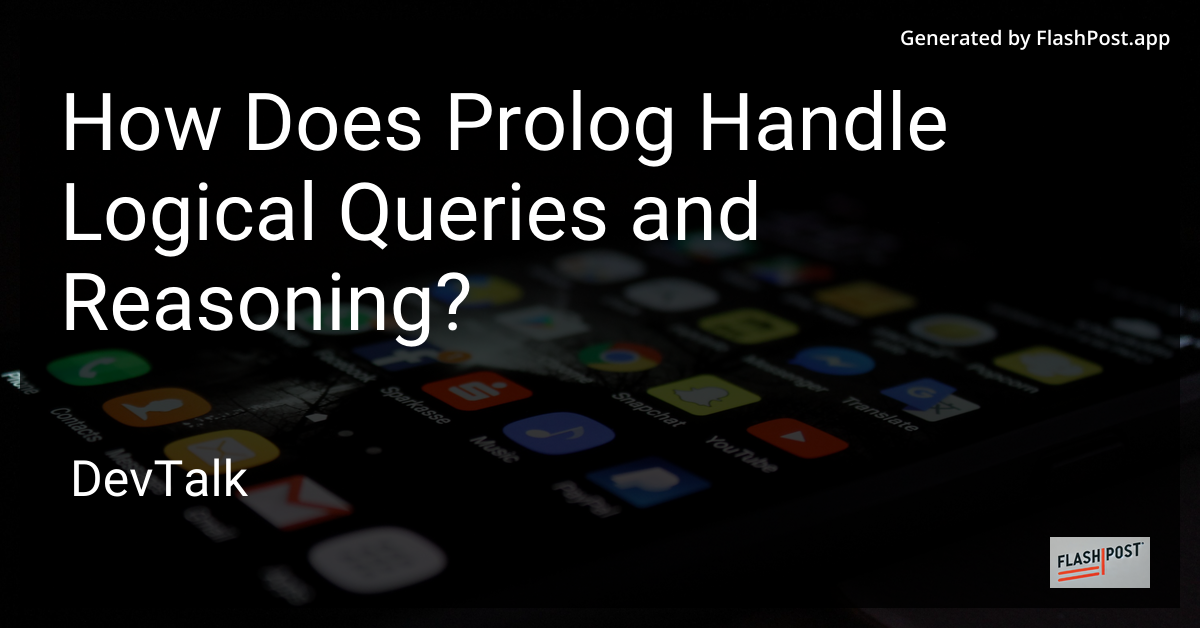How Does Prolog Handle Logical Queries and Reasoning?

How Does Prolog Handle Logical Queries and Reasoning?
Prolog, a powerhouse in the realm of logic programming languages, excels in handling logical queries and reasoning.
This article delves into the intricacies of Prolog's approach, providing insights for both novices and seasoned developers. If you're eager to deepen your understanding of Prolog and explore practical applications, this guide will be invaluable.
Understanding Logical Queries in Prolog
Prolog, short for "Programming in Logic," is designed to solve problems related to logic and reasoning efficiently. It achieves this through a unique mechanism called backtracking, enabling it to explore multiple possibilities and find solutions to logical queries.
The Core Mechanism: Backtracking
At the heart of Prolog's query resolution is backtracking. When a query is posed, Prolog attempts to satisfy it by recursively evaluating rules and facts defined in the knowledge base. If a path leads to a failure, Prolog backtracks to the last successful point, trying alternative paths until the query is resolved.
Declarative Nature and Predicate Logic
Prolog relies heavily on predicate logic to represent knowledge. Unlike procedural languages, where instructions are given, Prolog defines relationships and lets the engine infer solutions. This declarative nature allows programmers to focus on the "what" rather than the "how."
Reasoning Capabilities in Prolog
Prolog's rule-based system allows it to perform reasoning similar to human logic. It can infer new information from existing facts, making it powerful for tasks like expert systems, natural language processing, and AI.
Rule Definition
Rules in Prolog are expressed in the form of Horn clauses. The rules define relationships among various entities, creating a network of logical statements. This structure facilitates efficient reasoning, as Prolog can deduce new facts by chaining these rules.
Use Cases of Prolog's Reasoning
- Expert Systems: Prolog is commonly used to develop expert systems, which simulate human decision-making processes.
- Pattern Matching: The language's inherent pattern-matching capabilities make it ideal for tasks like data mining and AI model training.
- Artificial Intelligence: Prolog serves as a foundation for AI applications, enabling logical reasoning and learning algorithms.
Enhance Your Prolog Skills with These Resources
Are you ready to dive into the practical aspects of Prolog programming? Here are some excellent resources to help you enhance your skills:
- Learn how to write numerical predicates in Prolog.
- Explore tree traversal techniques in Prolog programming.
- Check if a certain pattern exists in a list with this Prolog programming tutorial.
- Discover how to implement your own list in Prolog.
- Generate all pairs of natural numbers in Prolog.
Conclusion
Prolog stands out as a powerful tool for handling logical queries and reasoning. Its ability to perform backtracking, pattern matching, and logical deduction makes it invaluable in various domains, from AI to complex data analysis. By understanding its core mechanisms, developers can harness its capabilities to build sophisticated logical solutions. Enhance your Prolog development journey by diving into these practical resources and applying them to real-world scenarios.
This article is designed to be SEO-optimized with keywords related to Prolog programming, logical queries, and reasoning, ensuring good visibility on search engines. The links provided will direct readers to further resources for enhancing their Prolog skills.